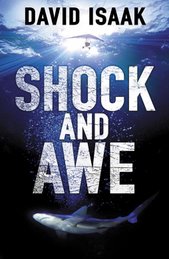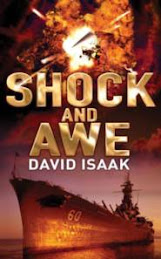I'll warn you upfront: It's about manuscript formatting.
I have opinions on the topic that deviate from conventional wisdom, but, even then, it's hard for me to maintain that this will be a dramatic, suspense-filled post. (Look, guys--renegade formatting! Shall we read about that...or watch the Teletubbies?)
There's three items I want to touch on, each more thrilling than the one before: Fonts, Margins, and Headers/Pagination. Buckle up, we're in for a wild ride.
DISCLAIMER: If an agency or house declares what they would prefer in terms of manuscript formatting, for the love of Pete (whatever that means) give it to them.Fonts
There seem to be three schools of thought on the topic of fonts:
Courier Only, Infidel: Many of the
Courier lovers are old-school types (or folks who have been associated with screenwriting). Some of them are handy at doing eyeball word counts based on secret whitespace formulas they learned from Max Perkins, though some of the formulas require dragging out the old slide rule. They may tolerate a manuscript in something other than
Courier, but they won't be happy about it. Copyeditors tend to prefer it, but when you are submitting for acquistion or representation, the copyeditor is miles down the road (and can usualy print it out to please themself, since by that late date you and your publisher are usually dealing in electronic copy).
Ya Gotta Change with the Times (New Roman):
TNR freaks tend to be on the young side (and many agents and editors are). Many of these folks have never seen (much less touched) a typewriter, but they can do 50 wpm on their Blackberries. If you send them a manuscript in
Courier, they'll worry you're a fusty old Luddite who won't be able to open e-mail attachments.
The Get-A-Grip School: The redoubtable Miss Snark is the foremost advocate of a philosophy that says a writer has more important things to worry about and that any agent or editor you really want to be associated with won't really give a damn what font you use as long as it isn't utterly frou-frou. (I think she's absolutely right, but I'm going to ignore that fact. Otherwise I won't be able to complete this post.)
Why Courier is great:
Courier carries along lots of extra whitespace. That means less words per page. That means that,
ceteris paribus, the pages turn faster.
Why Courier is not so great: Aside from the fact that it looks like you borrowed Grandma's typewriter to hammer out your 7th-grade book report,
Courier isn't that easy to read. Many people find themselves sort of
s-p-e-l-l-i-n-g o-u-t e-v-e-r-y w-o-r-d when they read
Courier. Some publishing professionals claim
Courier is intrinsically easier on the eyes and quicker to read...but I notice they seldom publish their books in
Courier. Don't they care about
our eyes?
Why Times New Roman is great: TNR is a clean, no-nonsense, proportionally spaced font. It looks professional, and most studies show it's easier to read, as the words are tied together into packages.
Why Times New Roman is not so great: It's dense. Oh, baby, can it pack the words into a small space. Readable, yes...but you may feel as though the page you are reading was written in the 19th Century by someone who was being paid by the word. Probably translated from the Russian (poorly). Any minute now, you expect itty-bitty footnotes. All things held equal,
Times New Roman may be easier to read...but those are lonnnnngggg, dense pages. (If you are worried about minimizing page count rather than word count for some reason,
Times New Roman is the way to go.)
Courier moves the pages faster, Times New Roman speeds the eye through each word. It's a tradeoff, but I've got a sneaky solution. Which brings us to...
MarginsThe so-called 'standard' margins are one-inch all around. I agree that whatever you do, you should never go narrower than this. In fact, one-inch margins with Times New Roman to my eye look impossibly cramped already, so narrowing the margins would make your text look like the fine print on an insurance form.
Wider, on the other hand...
I use 1.5 inch margins on Left, Top, and Bottom (LTB), and 1 inch on the Right (where the ragged margin contributes its own white space.) It might seem that this would make the text look tall and skinny, but in fact it looks fine, and I've never had anyone remark on how it appears. (Trust me, the crowd I hang with will remark on anything.)
Here's the secret to this manuever: to a very close approximation, in the number of words per page, 1.5" LTB and 1" R in
Times New Roman equals 1" LTBR in
Courier.
In other words, using
Times New Roman and widening the margins to 1.5 inches LTB gives you the same word count per page as
Courier with standard 1 inch margins, but the proportional spacing of the
Times New Roman draws the eye along more rapidly. I believe the net result is the reader turning pages faster, and feeling less cramped, than under either of the standard approaches.
I started using this format intuitively, feeling that
Courier was clunky and outdated and
Times New Roman was too dense. How do I know it works? I don't. I only know I've never had any complaints; but I have had many compliments about my page-turning writing. Now, I like to flatter myself that at least some of that is a result of my prose, but I'm pretty sure that going for this best-of-both-worlds' formatting approach has never hurt me.
Headers/PaginationI can't claim authorship of this last idea, since I outright stole it from Sol Stein, a great writer and a great editor. (He's one of those who asserts, by the way, that an advantage of
Courier is that the lower word count per page makes the pages turn faster.)
Stein claims that when the reader hops from the bottom of one manuscript page to the top of the next,
anything in the header temporarily distracts the eye. So he makes what he calls a "sly" suggestion: use footers rather than headers. Keep the page numbers and author name down at the bottom. The momentum of the sentence will draw the reader right past the footer and up to the top of the next page without pause.
I think he's right. I don't always do it that way, and it looks a touch odd at first, but when I've done it, it doesn't seem to have perturbed anyone. It seems to have helped preserve continuity, which is a bigger problem when one is flipping loose manuscript pages than when one is reading a printed book.
Okay, AlreadyI admit that was probably boring. And Lord knows that skillfully deployed formatting in your manuscript will win you no kudos from the critics (who will never see it in any case). None of this matters nearly as much as the writing itself. Agents and editors are schooled in reading past the mechanics of presentation...when they are in the mood. Problem is, it's easy to hit them on a bad day. I think they need all the help they can get. So do our manuscripts.
As more manuscripts are submitted electronically, of course, this will matter less, as the recipients will change the fonts and margins to whatever they damn well please.


